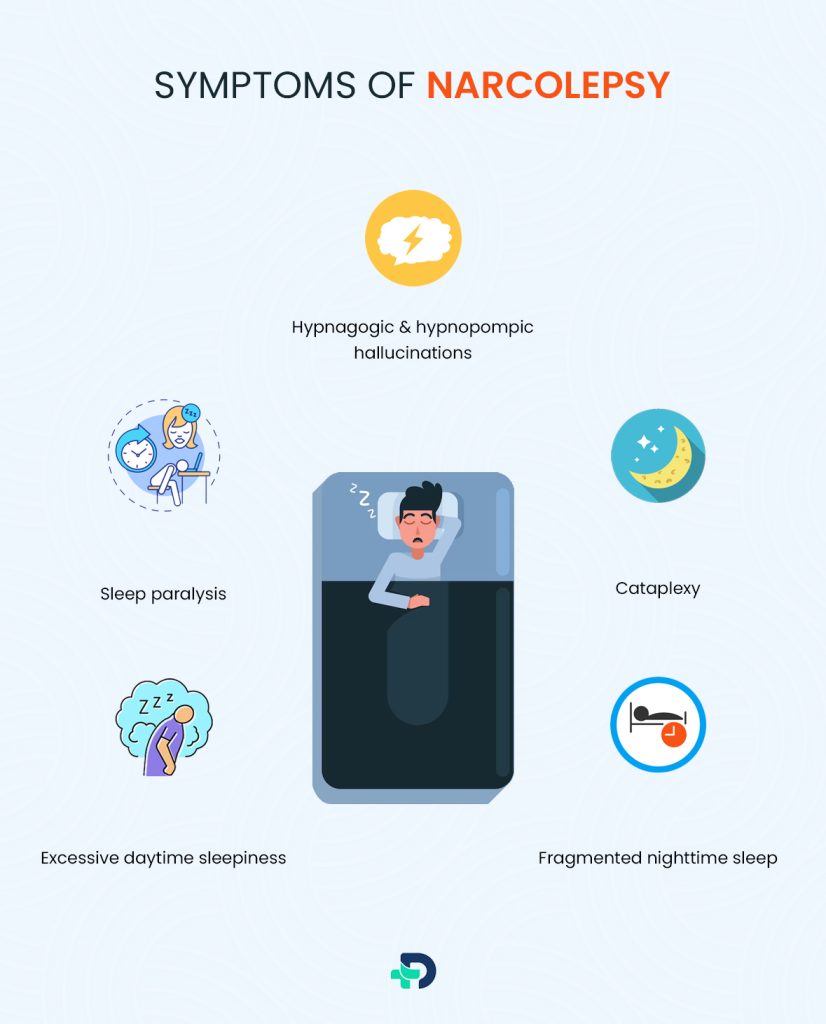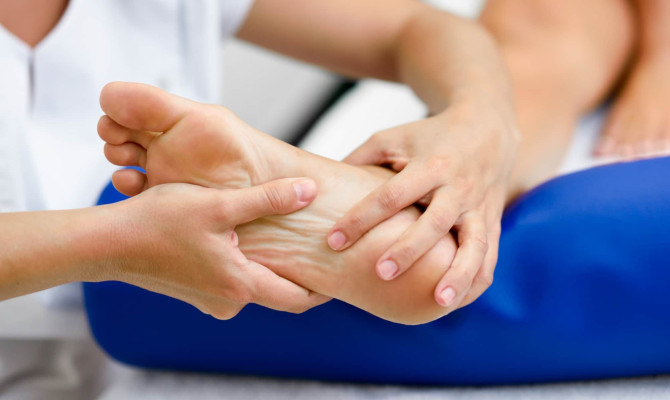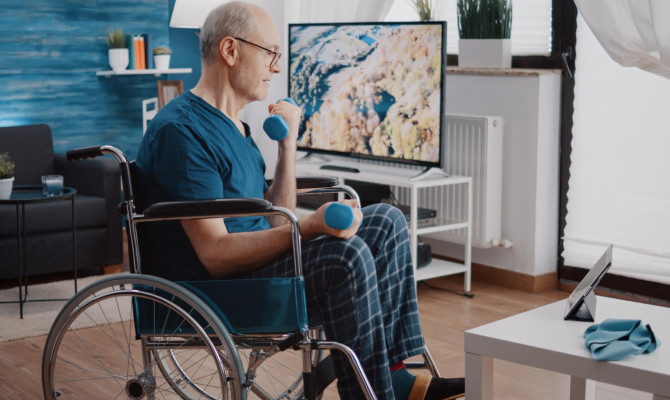Is Narcolepsy A Disability? What Do You Need To Know About Narcolepsy?

- Narcolepsy
- 04 Oct 2023
Introduction
Narcolepsy
Imagine a life where the boundary between wakefulness and slumber blurs, a sudden burst of laughter could lead to a collapse, and vivid dreams intrude upon your waking hours. This is the perplexing reality faced by people living with narcolepsy, a neurological disorder that challenges the conventional notions of sleep and wakefulness. Narcolepsy, often misunderstood and misdiagnosed, is more than excessive daytime sleepiness. It encompasses a complex tapestry of daily symptoms, from sudden muscle weakness to haunting sleep paralysis and vivid hallucinations. While it may seem like a rare and enigmatic condition, it touches the lives of millions worldwide.

In this comprehensive guide, we embark on a journey to unravel the intricacies of narcolepsy. We will explore the types and causes, studying light on the mechanisms underlying this enigmatic disorder. From the diagnostic challenges to the latest treatments, we aim to equip you with a deeper understanding of narcolepsy’s impact and the hope that exists for those living with it. 1 Introduction | Researched based study from National Institutes of Health
Is Narcolepsy a Disability?
- Yes, it can be considered a disability, particularly if its symptoms significantly impair a person’s ability to perform essential daily activities, including work, education, and life tasks.
- In many countries, including the United States, it can be recognized as a disability under disability laws and regulations.
Symptoms

Narcolepsy Symptoms
Symptoms of narcolepsy include:
- Excessive daytime sleepiness
- Cataplexy
- Sleep paralysis
- Hypnagogic and hypnopompic hallucinations
- Fragmented nighttime sleep
It is characterized by a number of symptoms that can seriously interfere with a person’s day to day activities. The following are the main signs of narcolepsy:
Excessive daytime sleepiness
- Overwhelming and persistent sleepiness during the day, which often leads to an irresistible urge to nap or fall asleep at an inappropriate time.
Cataplexy
- Strong emotions like laughter, surprise, or anger typically trigger sudden loss of muscle control. It can manifest weakness or, in severe cases, complete collapse.
Hypnagogic and hypnopompic hallucinations
- When dozing off (hypnagogic) or waking up (hypnopompic), vivid and frequently disturbing hallucinations occur. These delusions may be auditory, visual, or ductile with interrupted sleep at night.
Fragmented nighttime sleep
- People with narcolepsy often experience frequent awakenings or disruptions during nighttime sleep, leading to poor sleep quality.
It’s important to note that not everyone with narcolepsy experiences all these symptoms, and the severity can vary from person to person. 2 Symptoms | Researched based study from National Institutes of Health
Types
Types of Narcolepsy
Narcolepsy Type 1 (NT1)
- Also known as narcolepsy with cataplexy or narcolepsy with hypocretin deficiency.
- The hallmark feature of NT1 is the presence of cataplexy, which is sudden muscle weakness or loss of muscle control triggered by strong emotions such as laughter, surprise, or anger.
- People with NT1 also experience excessive daytime sleepiness, sleep paralysis and hallucinations.
- It is often associated with a significant reduction in hypocretin levels (also known as orexin), a neurotransmitter in the brain that regulates wakefulness and sleep. This reduction is thought to be an autoimmune response. 3 Types | Researched based study from National Institutes of Health.
Narcolepsy Type 2 (NT2)
- Also referred to as narcolepsy without cataplexy. It shares many symptoms with Type 1, including excessive daytime sleepiness.
- The critical distinction is the absence of cataplexy NT2. People do not experience cataplexy; if they do, it is very mild and infrequent. 4 Types | Researched based study from National Institutes of Health
Causes
Narcolepsy Causes
What is the main cause of narcolepsy?
Although the specific causes are not entirely understood, it is caused by a combination of genetic and autoimmune environmental variables is most likely to be responsible. Here is an overview of the potential causes and contributing factors:
Genetics
- There is evidence that it can have a genetic component. Some narcoleptics have a family history of the disorder, which suggests a hereditary susceptibility.
- Specific genes, such as those related to the immune system and the production of hypocretin, have been implicated. 8 Causes | Researched based study from National Institutes of Health
Autoimmune hypothesis
- One of the leading theories is that narcolepsy may involve an autoimmune response. In people with narcolepsy Type 1, there is a significant reduction in the levels of hypocretin in the brain.
- It is believed that an autoimmune reaction may lead to the destruction of cells that produce hypocretin. 8 Causes| Researched based study from National Institutes of Health
- However, the exact trigger for this autoimmune response is still under investigation.
Hypocretin deficiency
- In NT1, low hypocretin levels in the cerebrospinal fluid are commonly observed.
- Hypocretin is a neurotransmitter that is crucial in regulating wakefulness and sleep.
- The deficiency contributes to the excessive daytime sleepiness seen in narcolepsy.
Environmental factors
- Certain environmental factors such as infections (e.g. streptococcal disease), physical or emotional stressors, and hormonal changes may potentially trigger or exacerbate symptoms in genetically predisposed individuals.
- To determine the specific connection between these characteristics and narcolepsy, more research is necessary. 7 Causes | Researched based study from National Institutes of Health
Brain abnormalities
- Brain imaging studies have shown differences in the brains of people with narcolepsy, particularly in regions involved in sleep regulation and the production of hypocretin.
- These abnormalities may also play a role in its development. 2 Causes | Researched based study from National Institutes of Health.
Diagnosis
Diagnosis of Narcolepsy
How do you confirm narcolepsy?
Narcolepsy is a complex sleep disorder that often requires a combination of clinical evaluation and specialized sleep tests for an accurate diagnosis. The following steps are frequently included in the diagnostic process:
Clinically evaluation
- Healthcare provider of a sleep specialist or neurologist conducts author of clinical evaluation. They will take a detailed medical history and ask about the patient’s symptoms, including excessive daytime sleepiness, cataplexy, sleep paralysis, and hallucinations.
- Family history is also essential, as narcolepsy can have a genetic component.
Polysomnography
- A thorough sleep analysis carried out overnight in a sleep center or lab.
- The electroencephalogram (EEG), electrooculogram (EOG), electromyogram (EMG), heart rate, and breathing patterns are just a few of the physiological variables that are tracked during PSG.
- It helps rule out other sleep disorders, such as sleep apnea and ensures that the patient’s nighttime sleep is adequately assessed.
Multiple sleep latency test (MSLT)
- This daytime sleep study was carried out the day following the PSG. It evaluates the severity of excessive daytime drowsiness and analyses the patient’s propensity to fall asleep during the day.
- The patient takes a series of short naps at intervals throughout the day, the time it takes to fall asleep, and whether they enter the rapid eye movement (REM) sleep during those naps is recorded.
- The presence of a short sleep latency (typically less than 8 minutes) and the occurrence of rain sleep in at least two of the naps is are an indication of narcolepsy.
CSF analysis
- In other diagnostic tests, cerebrospinal fluid analysis may be performed in some cases to measure hypocretin levels.
- Individuals with narcolepsy Type 1 often have low hypocretin in groups. In contrast, those in the narcolepsy type typically have normal levels.
Genetic testing
- Genetic testing may be considered in cases with a strong family history of narcolepsy to identify specific genetic markers associated.
Additional tests
- Other tests, such as actigraphy (variable devices that monitor activity and sleep patterns) and questionnaires, can provide additional information about a patient’s sleep-wake practices and daily functioning.
A comprehensive evaluation that combines clinical assessment with sleep studies is essential for accurately diagnosing and distinguishing it from other disorders with similar symptoms. Early diagnosis and appropriate treatment are essential for effective management and an increase in the quality of life for those who live with the condition. 5 Diagnosis | Researched based study from National Institutes of Health
Treatment
Narcolepsy Treatment
Despite being a lifelong illness, its symptoms can be adequately treated with a variety of medications. The therapy option is determined by the unique symptoms and requirements of the patient. Here are the main treatment options:
Lifestyle modifications
Changes in lifestyle can improve narcolepsy sufferers’ ability to control their symptoms. Some typical medications are:
Scheduled naps
- To avoid becoming too sleepy during the day, plan brief, scheduled naps.
Regular sleep schedule
- Keeping a regular sleep routine, even on the weekends, will increase the quality of your nocturnal rest.
Nutrition and exercise
- Adopting a healthy diet and getting frequent exercise to improve overall wellbeing.
Avoid triggers
- Recognizing and avoiding circumstances, such as intense emotions or stress, that could cause cataplexy.
Medications
- They are often a key component of narcolepsy treatment. They can help manage various symptoms, including:
Stimulants
- To treat excessive daytime sleepiness, doctors frequently prescribe drugs like modafinil and methylphenidate.
Sodium oxybate
- It can help you sleep better at night and have fewer instances of cataplexy.
Antidepressants
- Venlafaxine, a selective norepinephrine and serotonin reuptake inhibitor, can be used to treat symptoms.
Medications to control sleep-related symptoms
- Certain medications can help manage sleep paralysis and hallucinations.
Behavioral Therapy
Behavioral therapy can be a valuable addition to narcolepsy treatment helping people develop strategies to cope with symptoms and improve sleep hygiene. Some components include:
- It can address sleep-related issues and provide tools to manage data and sleepiness and reduce anxiety.
Scheduled napping
- A structured nap schedule can optimize daytime alertness.
Stress management
- Exercises like meditation and stress-reduction methods can help lessen the negative effects of stress on symptoms. 6 Treatment | Researched based study from ScienceDirect
FAQs
Narcolepsy – Frequently Asked Questions
Q. How severe is narcolepsy?
- A person’s everyday life, wellbeing, and safety can be profoundly impacted by this severe neurological sleep condition.
Q. Is narcolepsy lifelong?
- Yes, it is typically a lifelong condition. It is considered a chronic neurological disorder, and while symptoms can vary in severity and may change over time; it does not usually go away. However, with appropriate treatment and management strategies, many people can lead fulfilling lives and effectively control their symptoms to a considerable extent.
Q. What age does narcolepsy start?
- It can start at any age but often becomes noticeable in adolescence or early adulthood. The onset can differ from person to person and occasionally only be noticed right away. While some people may start showing symptoms as early as childhood, others might not.
- Typically, the symptoms become more pronounced during the teenage years and early adulthood, making it more likely for diagnosis to occur during this time.
Q. Can narcolepsy be cured?
- There is no known cure for it. However, it is essential to note that it can be effectively managed with various treatments and lifestyle adjustments.
Any feedback on this article?
 This Articles content was accurate
This Articles content was accurate Very Informative Article
Very Informative Article I have a question or a comment
I have a question or a comment
 This article contains inaccurate content
This article contains inaccurate content This article was not helpful
This article was not helpful I have a question or a comment
I have a question or a comment
We appreciate your helpful feedback!
Checkout our social pages
References
-
National Institutes of Health
Introduction
-
National Institutes of Health
Symptoms | Causes
-
National Institutes of Health
Types
-
National Institutes of Health
Types
-
National Institutes of Health
Diagnosis
-
ScienceDirect
Treatment
-
National Institutes of Health
Causes
-
National Institutes of Health
Causes




































